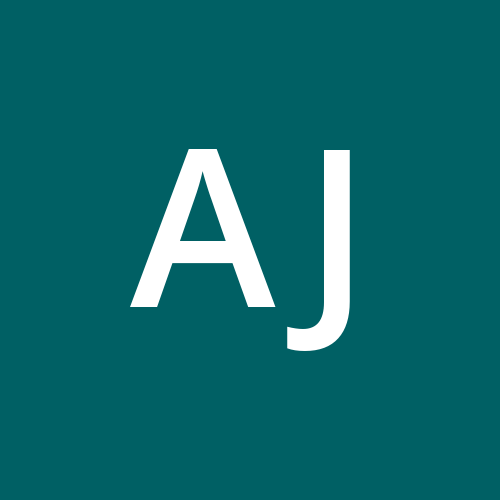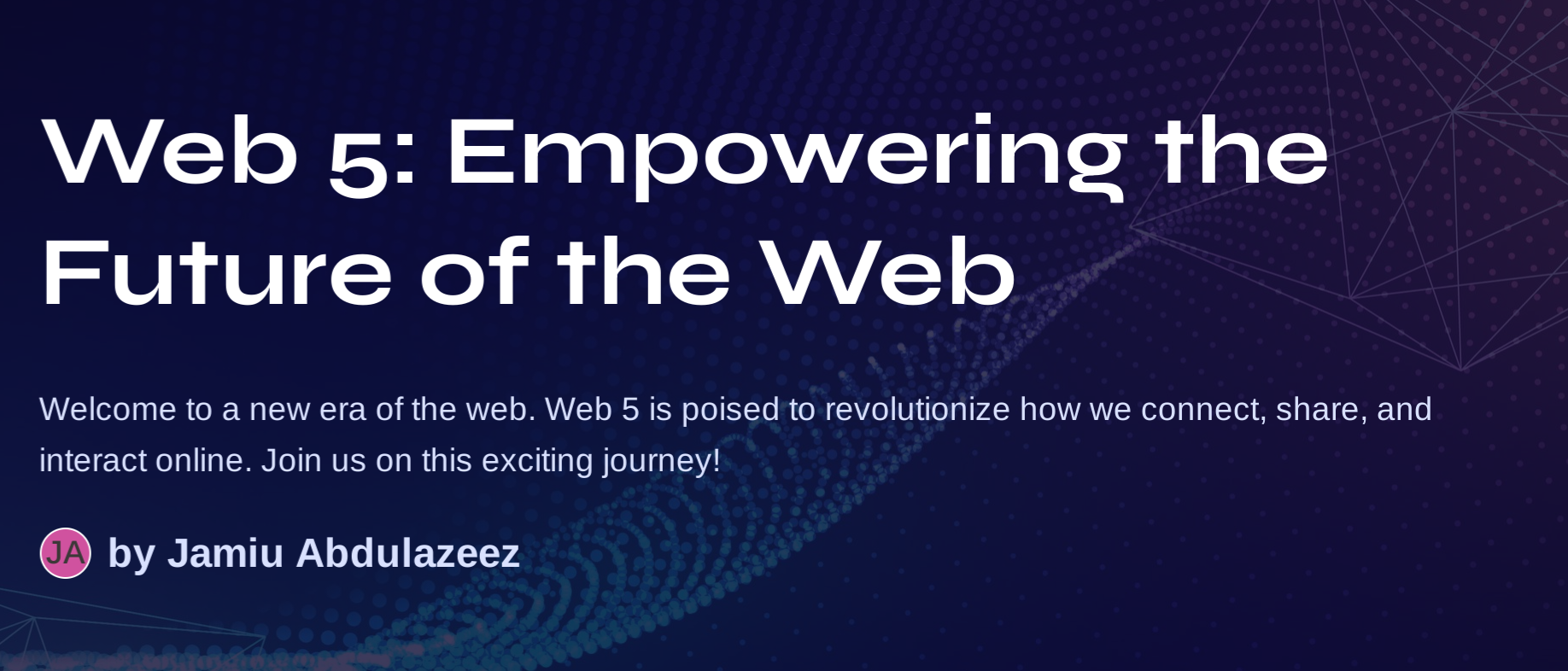Title: "Web 5: Empowering the Future of the Web"
 Abdulazeez Jamiu
Abdulazeez Jamiu
Table content:
1. Introduction
- Brief overview of the current web model
- Introduction to Web 5 as a decentralized platform
- The promise of empowering users with self-owned identity and data control
2. Components of Web 5
- Overview of the three main pillars: Decentralized Identifiers, Verifiable Credentials, and Decentralized Web Nodes
- Explanation of how these components are based on open standards
3. Decentralized Identifiers (DIDs)
- Discussion on the limitations of current identifiers owned by third parties
- Introduction to DIDs as self-owned identifiers
- Structure and components of a DID: Scheme, DID Method, and DID Method Specific String
- Implementation on ION and the preference for anchoring DIDs on a Layer 2 DID network
4. Verifiable Credentials
- Introduction to Verifiable Credentials as a W3C standard
- How Verifiable Credentials work in tandem with DIDs to enable trustless interactions
- Example scenario: Alice proving her bank account with a Verifiable Credential
5. Decentralized Web Nodes (DWNs)
- Current centralized data storage and its drawbacks
- The role of DWNs in decoupling data from applications
- Examples like BlueSky as a decentralized version of Twitter
- Features of DWNs: universally addressable, replicated, secure, semantic discovery, async message threads
6. Identity Wallets
- Recognizing the complexity of Web 5 components
- The need for Identity Wallets as a user-friendly interface
- Functions of Identity Wallets: managing decentralized identities, credentials, authorizations, etc.
7. Decentralized Web Apps
- Enabling developers to build on top of Web 5
- Comparisons to Progressive Web Apps (PWAs)
- Examples of applications: Music Apps, Travel Apps
- Illustrating the benefits of a decentralized platform for app development
8. Conclusion
- Recap of the transformative nature of Web 5
- Encouragement for developers to explore and contribute to the decentralized future
- Acknowledgment of the limitless possibilities that Web 5 brings to the digital landscape
INTRODUCTION
Introduction: In the ever-evolving world of technology, Web 5 will stands out as a source of change, offering a decentralized platform that redefines user experience. On the current web, individuals lose control of their data and identity to centralized entities, locked in application silos. Web 5 strives to break this cycle, giving individuals the power to own their identity and control their data. Let's examine the three elements/ components that make up Web 5; Decentralized Identifiers, Verifiable credentials, Decentralized Web Nodes, all built on open standards, paving the way for a new era of decentralized apps and protocols.
Section 1: Decentralized Identifiers - Taking Ownership of Your Digital Identity In the existing web, our identifiers such as email addresses and social media handles are owned and regulated by third-party services. Decentralized Identifiers (DIDs) revolutionize this concept. DIDs, a W3C standard, give users self-owned identifiers, eliminating the need to rely on centralized entities for authentication. Anchored on ION, a Layer 2 DID network running on Bitcoin, DIDs enable a new world where people have control over their digital representation.
Section 2: Verifiable Credentials - Establishing Trustless Interactions for a Fresh Web Web 5 offers Verifiable Credentials, a fully ratified W3C standard which works in tandem with DIDs. These credentials, cryptographically signed by issuers, facilitate trustless interactions on the web. For instance, a bank can issue a Verifiable Credential to a user's identity wallet, containing claims such as account number and full name. This credential, presented as proof, allows users to engage without the need for mutual trust, cultivating a decentralized environment of credibility and verification.
Section 3: Decentralized Web Nodes - Releasing Data from Centralized Entities On the current web, centralized entities are data stores, holding our content and preferences on their servers. Web 5 breaks away from this model with Decentralized Web Nodes (DWNs), giving users the ability to host their data independently. BlueSky, a decentralized version of Twitter, is an example of this transition. With DWNs, users can present their content on any decentralized social media app, freeing data from application-centric entrapment. DWNs, accessible and secure, lay the groundwork for a wide range of decentralized apps and protocols.
Section 4: Identity Wallets - Streamlining Complexity for the Masses Acknowledging the complexity of these technologies, Web 5 introduces Identity Wallets, offering a user-friendly interface for managing decentralized identities and credentials. These mobile apps make it simple to access and control, allowing users to navigate the intricate web of DIDs, Verifiable Credentials, and DWNs with ease. Identity wallets serve as a key link, ensuring that even non-technical users can tap into the power of decentralization.
Section 5: Decentralized Web Apps - Constructing a New Era of Applications Web 5 is not only upturns existing models but also opens the door to a new era of decentralized web applications (DWAs). Developers can build on this open-source platform, centering on their applications' core functionality while leveraging the decentralization and identity management provided by Web 5. From music applications to travel apps, the opportunities are endless, creating a stronger user experience by effortlessly utilizing data across various applications.
Conclusion: Web 5 is a transformative force, ushering in a decentralized future for the web. With self-owned identities, trustless interactions, liberated data, intuitive interfaces, and a new breed of decentralized applications, the internet landscape is shifting. As we accept the decentralized web, the potential for innovation is boundless, offering a glimpse into the true spirit of the internet as it was initially intended. The journey to Web 5 marks a paradigm shift, giving individuals more power and reshaping the digital landscape for generations to come. It is evident that the modern world is becoming increasingly dependent on technology. We can observe that contemporary society is relying on digital advancements more and more in order to carry out a variety of tasks. With the growth in the technology sector, people have become accustomed to using it for their everyday activities.The journey to Web 5 will bring seamless self-owned identity,intuitive interfaces and unending creativity in the web world.
Subscribe to my newsletter
Read articles from Abdulazeez Jamiu directly inside your inbox. Subscribe to the newsletter, and don't miss out.
Written by
